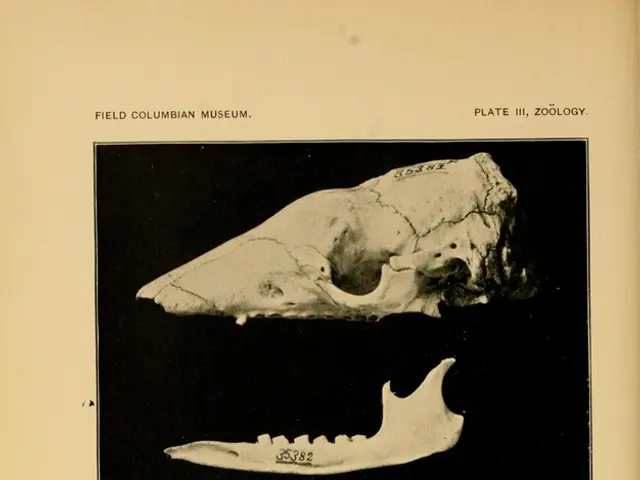Emotional Ups and Downs Post Menstruation: Unraveling the Psychological Swings Following Your Period
The menstrual cycle whiskers by, a mysterious and often misconstrued aspect of females' health. It's not just about the monthly physical struggle, but also the emotional and psychological turbulence it stirs up. While premenstrual syndrome (PMS) grabs the headlines, its lesser-known sibling - Post Menstrual Syndrome (PMS-Lite, for short) - demands attention, too. This condition, with its ominous name, can significantly impact a woman's mellifluous flow of life.
Let's decipher this Post Menstrual Syndrome and dive deep into its physical and emotional rough seas. Unlike PMS, which gnaws away before the bleeding, Post Menstrual Syndrome unleashes its ruthless wrath after the period has ceased.
The storm clouds hovering over Post Menstrual Syndrome are not as dense as PMS', but an estimated significant nucleus of women swab the rosy deck with its ripples. Ranging from a mere discomforting droplet to an intense tempest, the symptoms can hamper daily tasks, relationships, and overall well-being, hollering for attention and understanding. It's essential to remember that Post Menstrual Syndrome is not a doppelganger of depression (which is more prevalent in females), although their traits might overlap slightly.
Gather your compasses, dear reader, as we chart the troubled territories of Post Menstrual Syndrome's symptoms. Brace yourself for the tempestuous cocktail of physical ailments and emotional rollercoasters, each wave tailored to the individual's unique configuration.
Physical manifestations might include fatigue, headaches, bloating, and tenderness in the bosom. But the emotional and psychological symptoms are more likely to be the anchors dragging down the ship, causing distress. Emotional desolation sweeps in with mood swings, agitation, anxiety, and a profound sense of emotional instability. Post-period depression, akin to the melancholic farewell after a hysterectomy (even when ovaries remain), can reel in feelings of sorrow, hopelessness, or a lack of interest in usual activities.
Prepare for variability, as the length and intensity of Post Menstrual Syndrome symptoms can differ from one woman to another. Some may sail through the after-bloody waters for just a day or two, while others may be tossed about by its cruel tides for up to a whole week. The strength of the storm can range from a minor nuisance to an all-consuming wreck, akin to the ferocious waves unleashed by PCOS.
Unveiling the causes of Post Menstrual Syndrome is akin to sailing in a perpetual fog. Hormonal fluctuations dancing after the phase of bloodshed play the leading role in the script. The interplay of estrogen and progesterone sets the stage, with some women being exceptionally sensitive to these changes. This genetic predisposition may contribute to the stormy weather. External factors like stress and lifestyle choices might also fan the flames. Poor diet, sedentary habits, and high-stress levels all clasp steering oars in orchestrating the scene.
Underlying mental health issues can also cast a shadow on the Post Menstrual Syndrome drama. Those with a history of depression or anxiety may be more prone to post-period depression and emotional manifestations. This connection between mental health and menstrual health is echoed throughout different conditions, such as Post Tubal Ligation Syndrome (PTLS), which casts a dark net over mental well-being.
Climb aboard the diagnostic vessel as we embark on a journey of understanding Post Menstrual Syndrome. Recording symptoms and menstrual cycle patterns lie at the keel of this endeavor, with women often advised to maintain a detailed diary for the healthcare provider. They will sail through the data, seeking consistent patterns that emerge in the days following the period. Essential medical history and physical examination will also be unpacked, as the crew sorts through other potential culprits.
If the symptoms prove persistent and challenging, the harpoon will be aimed towards relief: combine lifestyle adjustments, dietary shifts, and, in some cases, medical interventions. A sea change in daily habits, rich with regular exercise, stress reduction techniques, and restful slumber, forms a robust foundation. Dietary adjustments and supplements like calcium, magnesium, and vitamin B6 might find themselves anchored to the ship's provisions. Generally, medications come last in the armory, mainly over-the-counter pain relievers for physical ills or hormonal birth control to regulate the menstrual cycle. However, for those grappling with post-period depression, antidepressants might be weighed in the balance, under the careful supervision of a medical professional.
Holistic approaches, brimming with therapy, mindfulness, and self-care, can be the ultimate lifeline for Post Menstrual Syndrome sufferers. Sailing with a support network of friends, family, or peer groups can provide that vital emotional relief and essential advice. Learning to anchor in moments of calm, deploy mindfulness and relaxation techniques, or ride the ebb and flow of symptoms through careful planning can shift the trajectory of the journey from choppy waters to clear blue seas.
In conclusion, while the storm clouds of Post Menstrual Syndrome linger on the horizon, awareness, and support can steer the ship towards calmer waters. Seeking help from healthcare providers and understanding the ship's symptoms are crucial steps towards a better sailing experience. With increasing knowledge, research, and resources, the fog lifting over Post Menstrual Syndrome signals a bright future ahead for those navigating its treacherous seas.
Just as we have begun to fathom the intricacies of complex conditions like migraine postdrome, brighter skies may eventually shine upon Post Menstrual Syndrome, paving the way for improved management strategies and increased quality of life for all who face its tumultuous waves.
References:
- American College of Obstetricians and Gynecologists. (2015). Premenstrual Syndrome (PMS) ACOG Practice Bulletin No. 15.
- Borrow, A. P., & Cameron, N. M. (2014). Estrogenic mediation of serotonergic and neurotrophic systems: Implications for female mood disorders. Progress in Neuro-Psychopharmacology and Biological Psychiatry, 54, 13-25.
- Direkvand-Moghadam, A., Sayehmiri, K., Delpisheh, A., & Kaikhavandi, S. (2014). Epidemiology of Premenstrual Syndrome (PMS) - A systematic review and meta-analysis study. Journal of Clinical and Diagnostic Research, 8(2), 106-109.
- Hantsoo, L., & Epperson, C. N. (2015). Premenstrual Dysphoric Disorder: Epidemiology and Treatment. Current Psychiatry Reports, 17(11), 87.
- Nevatte, T., O'Brien, P. M. S., Bäckström, T., Brown, C., Dennerstein, L., Endicott, J., ... & Yonkers, K. (2013). ISPMD consensus on the management of premenstrual disorders. Archives of Women's Mental Health, 16(4), 279-291.
- Rapkin, A. J., & Lewis, E. I. (2013). Treatment of premenstrual dysphoric disorder. Women's Health, 9(6), 537-556.
- Reed, S. C., Levin, F. R., & Evans, S. M. (2008). Changes in mood, cognitive performance and appetite in the late luteal and follicular phases of the menstrual cycle in women with and without PMDD (premenstrual dysphoric disorder). Hormones and Behavior, 54(1), 185-193.
- Yonkers, K. A., O'Brien, P. M. S., & Eriksson, E. (2008). Premenstrual syndrome. The Lancet, 371(9619), 1200-1210.
Common Symptoms of PMS:PMS refers to a collection of physical and emotional symptoms that some women experience in the days leading up to their period. These symptoms can include:
- Bloating
- Breast tenderness
- Fatigue
- Irritability
- Mood swings
- Food cravings
- Headaches
- Constipation or diarrhea
- Trouble concentrating [1][2][4].
- Post Menstrual Syndrome, a less recognized condition, can have profound effects on women's mental health and overall well-being, often causing distress and emotional instability.
- While Post Menstrual Syndrome symptoms may differ for each individual, they can vary from mild discomfort to extreme anxiety, mood disorders, and post-period depression.
- Understanding the connection between mental health and Post Menstrual Syndrome is crucial, as those with a history of anxiety or depression may be more susceptible to emotional manifestations.
- A holistic approach, including therapy, self-care, and stress reduction techniques, can complement traditional treatments for Post Menstrual Syndrome.
- Building a support network and practicing mindfulness can provide emotional relief and support for those dealing with Post Menstrual Syndrome.
- Expanding research and knowledge about Post Menstrual Syndrome may lead to improved management strategies and increased quality of life for millions of women worldwide.








